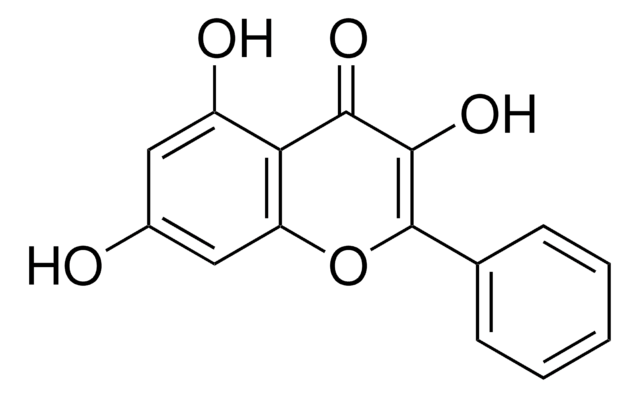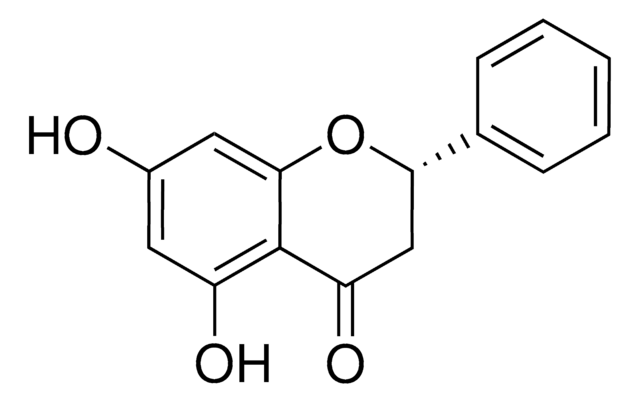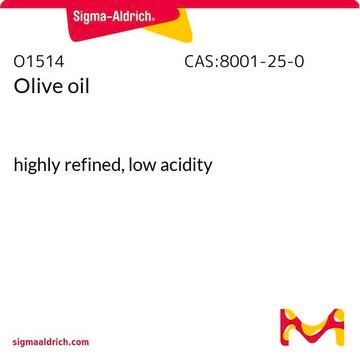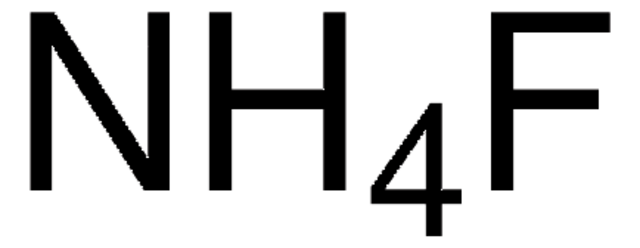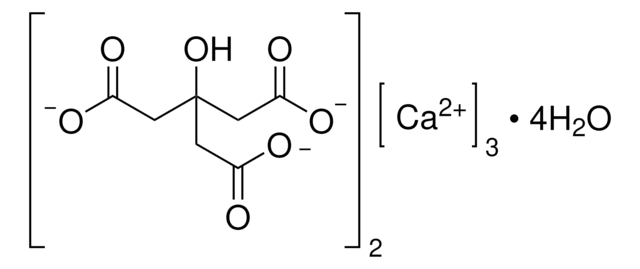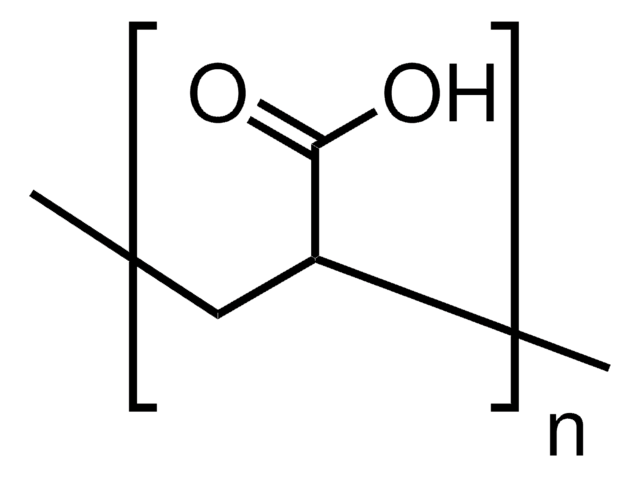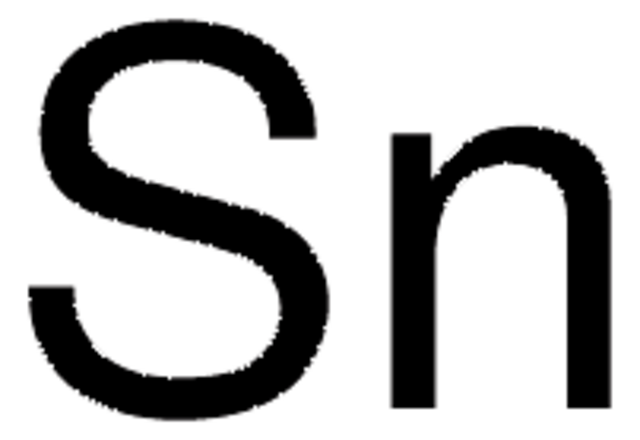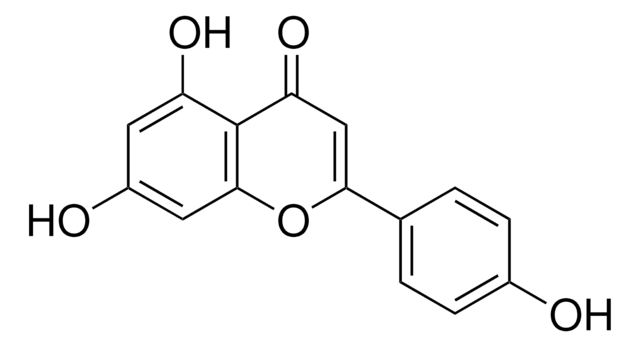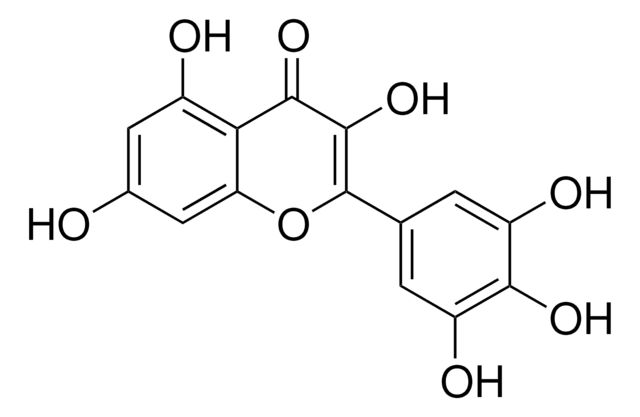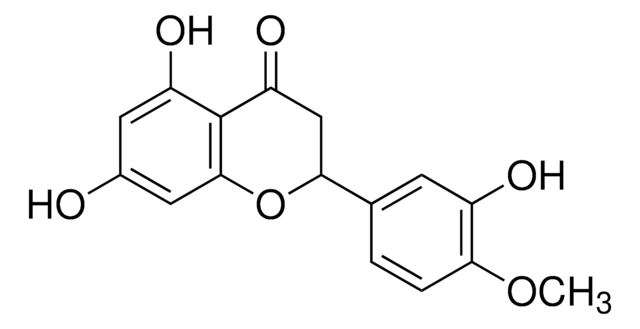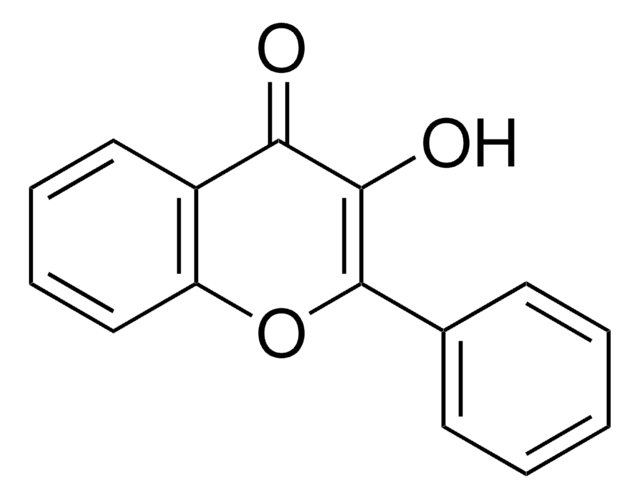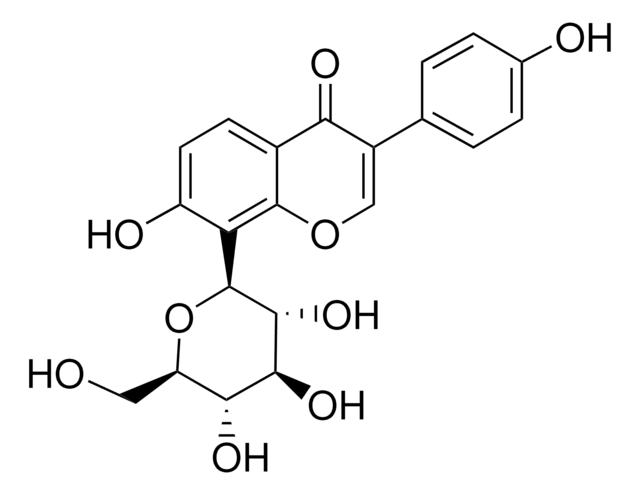282200
Galangin
autophagy inducing flavonoid
Sinónimos:
3,5,7-Trihydroxyflavone, Norizalpinin
About This Item
Productos recomendados
assay
≥95% (HPLC)
form
powder
color
yellow
mp
214-215 °C (lit.)
SMILES string
Oc1cc(O)c2C(=O)C(O)=C(Oc2c1)c3ccccc3
InChI
1S/C15H10O5/c16-9-6-10(17)12-11(7-9)20-15(14(19)13(12)18)8-4-2-1-3-5-8/h1-7,16-17,19H
InChI key
VCCRNZQBSJXYJD-UHFFFAOYSA-N
Gene Information
human ... ADORA2A(135) , ADORA3(140) , CYP1A2(1544)
rat ... Adora1(29290) , Adora2a(25369)
¿Está buscando productos similares? Visita Guía de comparación de productos
Categorías relacionadas
General description
Application
- as a test drug to test its ameliorative effect in a rodent model of cisplatin-induced nephrotoxicity
- to test its effect on the differentiation of 3T3-L1 preadipocyte cells into adipocytes
- as an internal standard in nuclear magnetic resonance spectroscopy and mass spectroscopy
Biochem/physiol Actions
signalword
Warning
hcodes
Hazard Classifications
Acute Tox. 4 Oral
Storage Class
11 - Combustible Solids
wgk_germany
WGK 3
flash_point_f
Not applicable
flash_point_c
Not applicable
ppe
dust mask type N95 (US), Eyeshields, Gloves
Elija entre una de las versiones más recientes:
¿Ya tiene este producto?
Encuentre la documentación para los productos que ha comprado recientemente en la Biblioteca de documentos.
Los clientes también vieron
Artículos
Antioxidants protect biological systems from oxidative damage produced by oxygen-containing free radicals and from redoxactive transition metal ions such as iron, copper, and cadmium.
Protocolos
ASTM D6526: GC Analysis of Impurities in Toluene on SLB®-IL100, 60 m Column
US EPA Method 8260 describes the analysis of volatile organic compounds in solid wastes and ground waters. This application illustrates the analysis of many compounds commonly analyzed by this method using purge and trap coupled to GC-MS.
Nuestro equipo de científicos tiene experiencia en todas las áreas de investigación: Ciencias de la vida, Ciencia de los materiales, Síntesis química, Cromatografía, Analítica y muchas otras.
Póngase en contacto con el Servicio técnico